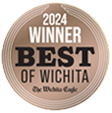
Gold Orthopedics
Bronze
Physical Therapy


Angular deformities of the knee are common during childhood and are usually variations in the normal growth pattern. The most common angular deformities affecting children are:
Bowed legs are very common in toddlers. If a child has bow legs, one or both legs curve outwards. When your child stands, there is a distinct space between the lower legs and knees. Bowed legs are rarely seen in adolescents. In most of the cases, children with bowed legs are significantly overweight.
The common causes of bowed legs include:
The most obvious symptom is bowing of the legs that appear when a child stands and walks. Other common symptoms are awkward walking pattern and turning in of the feet (intoeing). Bowed legs usually do not cause any pain; however, discomfort in the hips, knees and/or ankles may occur during adolescence.
Knock knees is a condition in which the legs curve inward at the knees. When a child stands, the knees appear to bend toward each other and the ankles are spread apart.
Knock knees most often develop as a part of normal growth. In some cases, especially if the child is 6 years of age or older, knock knees may occur as a result of other medical problems such as injury of the shinbone, osteomyelitis (bone infection), overweight and rickets.
The diagnosis of bow legs or knock knees is made through a physical examination. In addition, X-rays may be taken if a child is older than 2 ½ years and has symmetrical legs.
As the child grows, the condition usually corrects itself. For children with severe, unresolved bow legs, doctors may recommend non-surgical treatment options such as bracing, physical therapy and medications. If non-surgical treatment options do not correct your child’s bow legs, then surgery is considered.
Most children with knock knees do not require any treatment, but if the condition persists after age 7, then a night brace attached to an orthopaedic shoe may be recommended. If the separation between the ankles is severe, surgery may be an option.